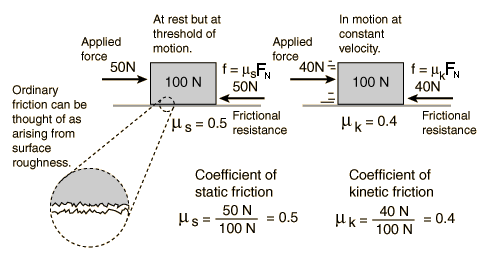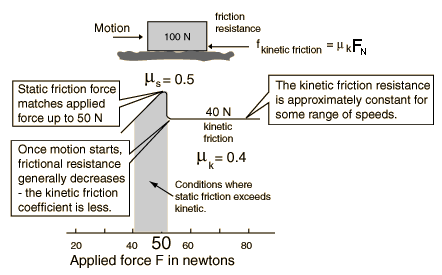
Friction
Frictional resistance to the relative motion of two solid objects is proportional to the force which presses the surfaces together as well as the roughness of the surfaces. The force that presses two surfaces together is the normal force: Fn. It is called ‘normal’ because that is an old word for perpendicular, not b/c it is normally there. The frictional resistance force may be written:Ffr = μFn where μ = coefficient of friction
μk = coefficient of kinetic friction
μs = coefficient of static friction
(FYI: μ is the Greek letter mu.)


Static friction is the force that you have to overcome to get something to start moving. This forces follows Newton’s Third Law and only matches the force on an object up to a threshold (see graphic).
Kinetic friction is the force that opposes motion while something is moving. It is by nature less than static friction (see graphic). If it were greater then it would be harder to keep something moving than to get it started!
One important point: friction is independent of the surface area of contact. The force of friction depends only on the normal force!
Solve the following problems using what you know about Newton’s Laws and the four powerful equations. All problems in this activity involve friction. Be careful, some of the problems have multiple parts! Do your work neatly on a separate piece of paper. Keep this page in your binder for future reference.